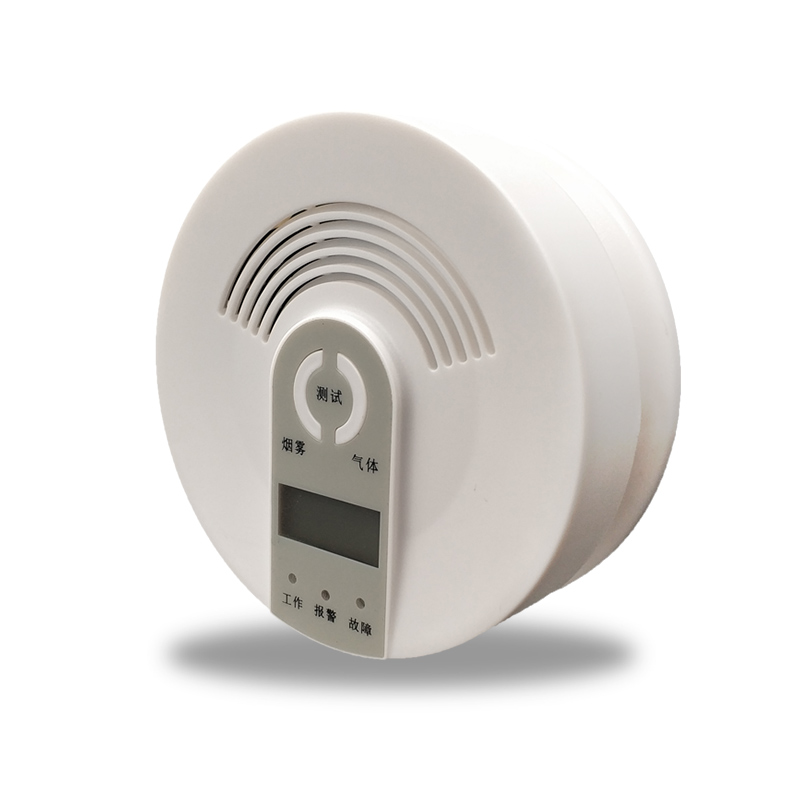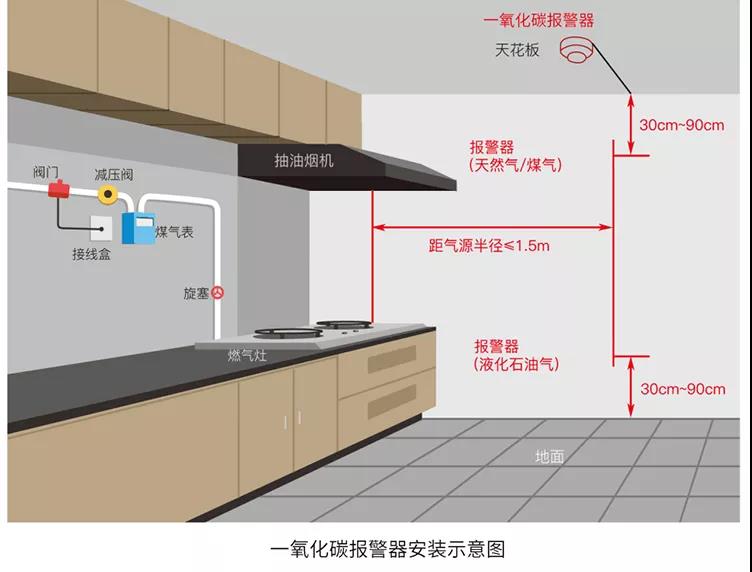Functional characteristics and installation specifications of household carbon monoxide alarms
2021-03-04 16:20:57
The main components of coal gas are CO, hydrogen and alkanes, alkenes, aromatic hydrocarbons, etc. The gas, CO, and hydrogen contents of different cities may differ greatly. Generally speaking, the gas alarm is judged by detecting the concentration of the leaked CO gas. If it is a gas containing large amount of hydrogen, it can be used to detect the concentration of the leaked hydrogen.

Carbon monoxide alarm features
The semiconductor type carbon monoxide alarm adopts the semiconductor type carbon monoxide sensor as the sensitive element, which requires that the sensitive element can respond quickly when the constant temperature is about 200 ℃, so it should be added with heating wire heating, so it is necessary to provide a relatively large current. Large wind changes are very detrimental to its measurement, and it is also susceptible to cross-interference with other gases, such as alcohol, nitrogen oxides, hydrogen, alkanes, and other gases. It is easy to misreport, but it is cheap.
The general service life can reach five years. The electrochemical carbon monoxide alarm uses a zero-power electrochemical carbon monoxide sensor as a sensitive element. Most of them use the principle of fixed-potential electrolysis in the electrochemical method. The resistance to cross-gas interference is also very strong, and the price is relatively expensive. The electrochemical carbon monoxide sensor is a zero-power consumption type that does not require heating. It is very suitable for use with battery-powered detection circuits in conjunction with low-power detection circuits to make carbon monoxide concentration meters and portable carbon monoxide alarms.

Principle of carbon monoxide alarm
The carbon monoxide alarm uses a carbon monoxide sensor to sense the concentration of carbon monoxide gas in the air and converts it into an electrical signal. The magnitude of the electrical signal is related to the concentration of carbon monoxide.
Carbon monoxide alarms are classified according to the sensors used, generally divided into semiconductor carbon monoxide alarms (also called catalytic type), electrochemical carbon monoxide alarms, infrared carbon monoxide detectors, etc.
In terms of measurement sensitivity, accuracy, stability, and resistance to cross-gas interference, the infrared carbon monoxide detector is better, but it is more expensive and suitable for laboratory use. The civilian ones are generally catalytic and electrochemical carbon monoxide alarms.

Attention to installation of carbon monoxide alarm
(1) The alarm probe is mainly a detection element that contacts the combustion gas sensor. It consists of a platinum wire coil coated with alumina and a binder, and its outer surface is attached with rare metals such as platinum and palladium. Therefore, be careful when installing to avoid breaking the probe.
(2) The installation height of the alarm should generally be 160-170cm, so that the maintenance personnel can carry out daily maintenance.
(3) The alarm is a safety instrument with sound and light display functions, and should be installed in a place where the staff can easily see and hear, so as to eliminate hidden dangers in time.
(4) There must be no strong electromagnetic fields (such as high-power motors and transformers) that affect the operation of the instrument around the alarm.
(5) The density of the measured gas is different, and the installation position of the indoor probe should also be different. When the measured gas density is less than the air density, the probe should be installed 30cm away from the roof in the downward direction; otherwise, the probe should be installed 30cm away from the ground in the upward direction.

Installation location of carbon monoxide alarm
Installation location of household carbon monoxide alarm: The detector should be installed in a place where gas is easy to leak, and the specific location should be determined according to the proportion of the detected gas relative to air. When the specific gravity of the detected gas is greater than the specific gravity of air, the detector should be installed at a distance of (30 ~ 90) cm from the ground, and the position of the sensor should be downward. When the specific gravity of the detected gas is less than the specific gravity of the air, the detector should be installed at a distance of (30 ~ 90) cm from the ceiling, and the sensor location should be downward.
In order to use the detector correctly and prevent the failure of the detector, please do not install it in the following locations:
1. Places directly affected by steam and oil fumes;
2. Places with large air flow such as air inlets, ventilating fans, and room doors;
3. Where there is a lot of water vapor and water droplets (relative humidity: ≥90% RH);
4. Where the temperature is below -40 ℃ or above 55 ℃;
5. Places with strong electromagnetic fields.
ASA Copolymer for Extusion Super Cover
ASA resin is a ternary copolymer consisted of Acrylonitrile, Styrene and Acrylate. ASA copolymer integrates acrylates's high impact strength and excellent weather-resistance, chemical resistance and high hardness of acrylonitrile, good processability of styrene. It can be extruded single & coextruded over ABS and PVC. ASA is particularly used in outdoor applications that require long term color stability, excellent weather resistance.

ASA Resin Copolymer, ASA Polymer, ASA Resin PlAStic Polymer
Shandong Novista Chemicals Co.,Ltd (Novista Group) , https://www.novistachem.com